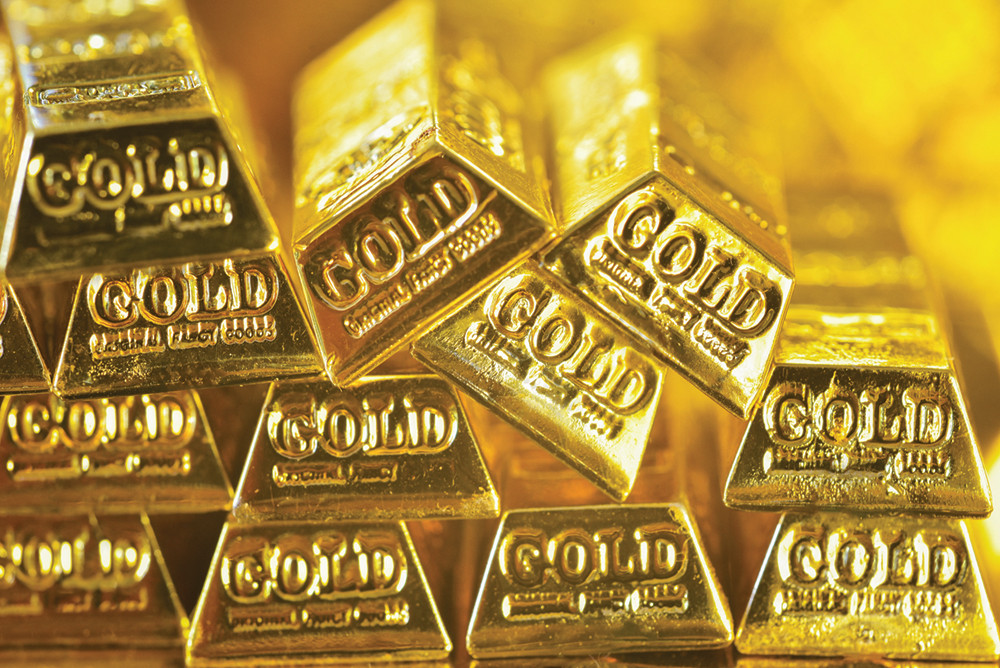
The popular saying - Trade in gold during times of uncertainty - has never been more relevant than the current scenario. Lately, the world has been awash with stories of ambiguity and gold has benefitted immensely. Having commenced at $1150.33 per troy ounce at the beginning of 2017, the price has skyrocketed by 18 percent with gold attaining bullish patterns in all months except June. In hindsight, the prices had tested the resistance level of $1300 per troy ounce twice on April 16 and June 6 before succumbing to the pressure and breaking the psychological level on August 28. The prices gathered momentum thereafter, accomplishing a high price of $1357.31 per troy ounce on September 8.
So, what had driven gold to tread a bullish path? Common factors including demand and supply of gold have time and again provided the direction coupled with the slowing down of the US economy and the rising possibility that the Federal Reserve will keep the rates unchanged for at least the remainder of 2017. However, geopolitics has been the major attribute in the contemporary times. The ongoing tussle between USA and North Korea has been the trigger point for the ride. In late August, when North Korea launched a missile over Japan, gold prices inclined to their highest level since the US election in November 2016. Gold has indeed emerged as a safe haven asset.
With the rise in the price of gold, the global commodity exchanges have witnessed a surge in the volume. After the launching of the missiles by North Korea over Japan on August 29 and September 5, the records for the number of volumes was shattered with two of the top 10 all-time highest trading volumes occurring on the above stated days on the COMEX platform. However, the highest ever trading volume day in the COMEX platform remains on November 9, 2016, the day after the US Presidential elections where Donald Trump triumphed over Hillary Clinton.
Gold has not only responded to global events but has also reacted to other events. According to the latest reports, inflation in the USA remained below 2% while the jobs report came in lower-than-expected gains for August. Also, two officials from the Federal Reserve have warned that further rate increases could be doing “real harm” to the US economy. All of the preceding factors have signaled that no Fed rate hikes seem to be around the corner this year which has contributed to a weaker greenback and thereby send traders parking their investments on gold.
The value of gold has been trading at their highest levels in a year. In August 2016, prices peaked in the months following the BREXIT incident, reaching the highest price of $1375.11 per troy ounce. The markets are witness to similar price gains now. Following the US elections in November 2016, price gains did not sustain the momentum the way it did after the BREXIT saga. A pattern developed with the influx of various reports from the USA. When the payrolls exceeded expectations in July, gold slumped, but when the inflation data came in low, trading activities increased.
Along with geopolitical factors, another potent factor was the accelerating demand from retail traders. Traders who traditionally trade independently with smaller accounts than their institutional counterparts have increased their interest in gold. Retail traders have often viewed futures contracts in gold as a way to hedge against financial, political or economic uncertainties. Being a volatile commodity, gold also presents speculative opportunities of numerous magnitudes.
Interest from retail traders from the Asian region has also inclined during the period. In 2016, futures trading of gold in Asia grew by 60 percent vis-à-vis 2015, more than any region. Likewise in 2017, the volume has grown so far at 11 percent, trailing only to the region of North America. The major factor behind the rise from the Asian region is the 23-hour access per day to the global gold futures market. In hindsight, traders in Asia can find liquidity during trading hours in a way that the cash markets cannot. Economic growth in China has also helped to stimulate the trading activities of gold with GDP of China growing by 6.9 percent in the second quarter of 2017 beating the expectations of 6.8 percent.
With gold having been termed as a safe haven asset, it often responds to geopolitical factors. The bullion has been following the same pattern since the past few decades and is widely anticipated to follow the same trend in ensuing days too. As we enter the last quarter of 2017, various reports from the US economy and the demand from China and India will inevitably drive the prices of gold too. However, the strongest driver will be the constantly developing geopolitical factors which will give the momentum to the prices as we near the coming of the New Year 2018.
Vivek Risal is associated with Mercantile Exchange Nepal Limited in the capacity of Manager in Research and Development Department. He can be contacted at r&[email protected]
Vivek Risal is associated with Mercantile Exchange Nepal Limited in the capacity of Manager in Research and Development Department. He can be contacted at r&[email protected]
Published Date: November 23, 2017, 12:00 am
Post Comment
E-Magazine
RELATED Commodity Perspective





